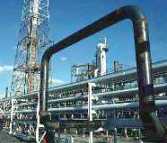US chemicals outlook bolstered by expansion of shale gas market – PwC
The expansion of the US shale gas market could potentially drive significant benefits to the US chemicals industry, including decreased raw material and energy costs, according to a new report from professional services firm PricewaterhouseCoopers (PwC).
In the report, titled Shale Gas: Reshaping the US Chemicals Industry, PwC estimates the potential impact of shale gas on US manufacturing could enable US manufacturers to lower their raw materials and energy costs as much as $11.6 billion annually by 2025.
Before natural gas from shale can be transported efficiently and sold commercially, impurities must be extracted. The by-products of this process, known as natural gas liquids (NGL), include hydrocarbons such as ethane, butane and propane.
The chemical sector uses NGLs to produce a variety of derivatives that ultimately become raw materials for multiple manufacturing sectors. In the case of ethane, they convert it to ethylene - the most significant single chemical in terms of volume and value - and then a range of downstream products.
A sampling of manufacturing sectors that ultimately benefit from greater capacity and more attractive pricing of NGLs spans apparel and accessories, computers and electronics, machinery, textile and fabrics and transportation equipment, among others, PwC said.
 “As the US chemical industry expands NGL conversion into a higher volume of downstream products, the positive impacts could flow through the value chain into other manufacturing sectors, particularly given that chemicals are used in an estimated 90% of all manufactured products,” said Anthony J. Scamuffa, US chemicals leader for PwC.
“As the US chemical industry expands NGL conversion into a higher volume of downstream products, the positive impacts could flow through the value chain into other manufacturing sectors, particularly given that chemicals are used in an estimated 90% of all manufactured products,” said Anthony J. Scamuffa, US chemicals leader for PwC.
“Not only could the abundance of NGLs help drive reduced pricing for derivative products, it could also potentially drive domestic re-shoring activity and possibly bring about a favorable shift in the US balance of trade as ethylene capacity comes on line.”
Major oil and gas companies and upstream commodity industry participants are evaluating their business models and actively moving forward to take advantage of emerging shale gas opportunities, according to PwC officials.
Some are considering whether to restart mothballed assets, invest in green field projects, form strategic alliances, and expand and upgrade existing assets. Many of these companies are also executing large capital projects, identifying engineering and construction resources, and establishing strategic sourcing agreements with NGL providers.
Further downstream, specialty chemical entities are starting to feel the effects of natural gas and NGL prices on their business models, PwC said. Moreover, as the commercial distribution of ethane and ethane-based raw materials increases, it could trigger new innovations and investment in new technologies.
Research and development initiatives leveraging ethylene-based chemistries that replace petroleum-based products may predominate, PwC says. Companies might also look for longer-term sourcing relationships and partnerships with raw material suppliers to help with developing new products.
“Based on industry reports, we estimate that the US chemicals industry has invested $15 billion in ethylene production, increasing capacity by 33%. As these investments take hold yielding more supply, the US could become a major, global, low-cost provider of energy and feedstocks,” said Garrett Gee, director of chemical advisory services at PwC.
“We are already seeing increased investment activity among multinational companies in building the infrastructure to export liquefied natural gas (LNG) products.”
As manufacturers replace petroleum-based raw materials with products based on ethylene, their cost structures should also change significantly, as well as supply and demand for certain products.
This pattern may be repeated for other petroleum-based raw materials, many of which are used in building, construction, adhesives, paint, coatings, plastics, packaging and carpeting.
If the changes brought about by shale gas take hold in the chemicals industry, PwC says they will also create a need for specialty steels, reactors, pumps, valves, fittings, control systems, storage tanks, and other equipment, as well as the services of engineering and construction firms.
Another possible outcome is that chemical products will increasingly become a substitute for more expensive materials, such as metals, glass, wood, leather and textiles.
“There is no doubt that the significant increase in NGL production could drive change across the US chemicals industry, but the full potential of the market will depend on a number of factors,” said Scamuffa.
“According to a New York Times article by Michael Levi in August, these factors include domestic tolerance for expanded hydraulic fracturing and its waste products, as well as the political and economic ramifications of exporting LNG.”
“The implications of the shale gas boom for the chemicals sector also vary by company, so management teams need to consider their individual situation and business options, including the risks and opportunities presented by the abundance of shale gas.”






Comments